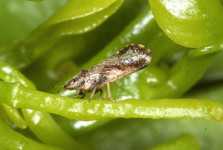Quarantine For California Citrus Belt

The secretary of the California Department of Food and Agriculture (CDFA), Karen Ross, has ordered a quarantine for part of Tulare County following two finds of Asian Citrus Psyllid (ACP) in the region, part of the state’s famed citrus belt. ACP vectors the causal agents of huanglongbing (HLB), one of the most devastating diseases of citrus in the world.
The two finds, one in the Strathmore area and one in the Terra Bella area, were made roughly five miles apart on yellow sticky cards originally hung for the discussion of another pest that invaded the state a decade ago, glassy-winged sharp shooter, said Mark Hoddle, an entomologist at University of California-Riverside. While obviously disturbing, Hoddle said the situation could be worse. “The scouting teams found no breeding populations,” he said. “They could just be hitchhikers that happened to be caught on these cards. Once we find breeding populations, that’s a completely different story.”
A breeding population includes numerous adults, nymphs, and eggs, said Hoddle. “That means they’ve settled in.”
Breeding populations have been found throughout much of Southern California, largely on residential trees, to the point that they have given up spraying, said Hoddle. They are taking a biocontrol approach, and have so far released 23,000 ACP parasites known as Tamarixia in Los Angeles, Orange, and Riverside counties.
In Tulare County, however, the CDFA will take a far more aggressive approach in order to save the state’s $1.8 billion citrus industry. The CDFA has concluded that there are no biological, mechanical, or cultural controls that can eradicate the pest in the citrus belt. They are ordering spraying of pyrethroids to the foliage as well as ground applications containing the systemic insecticide imidacloprid within 800 meters of detection sites.










